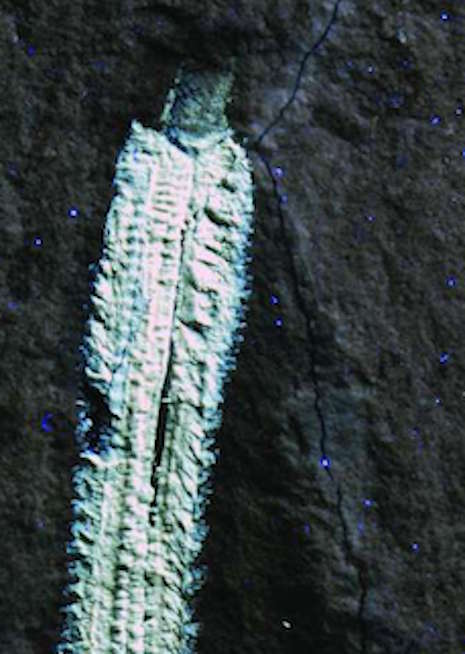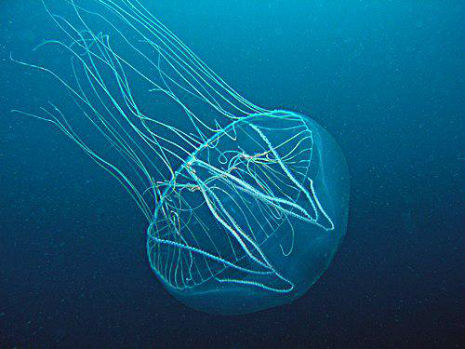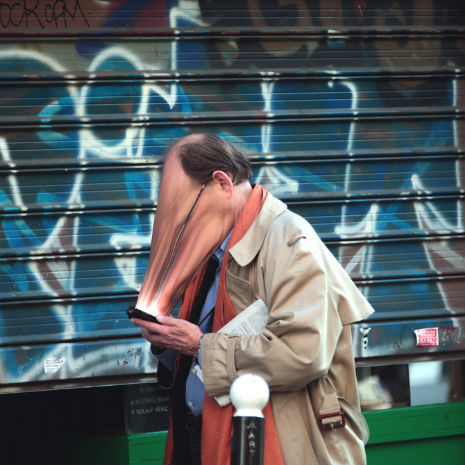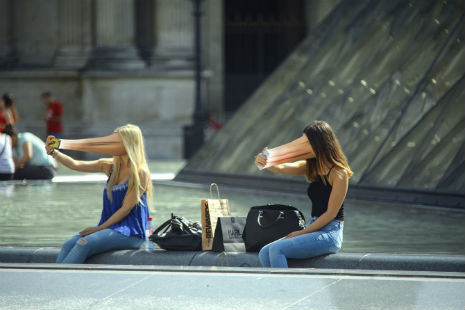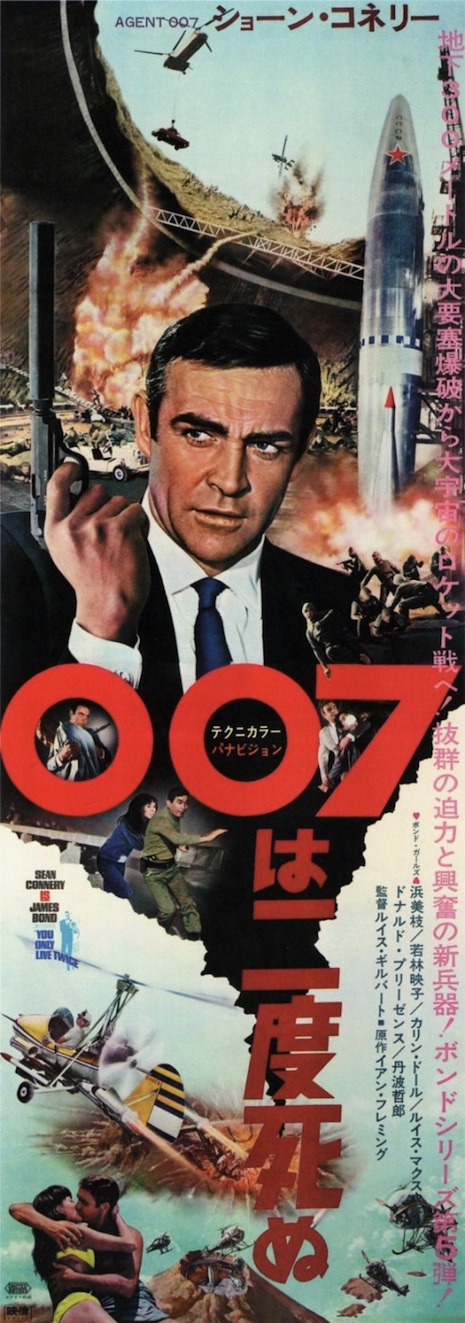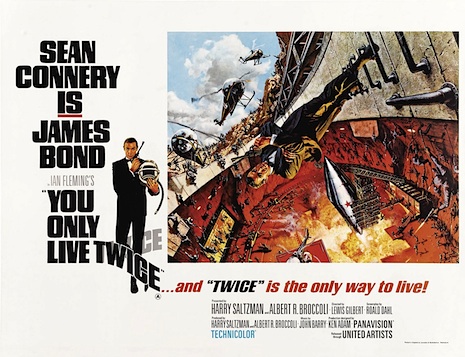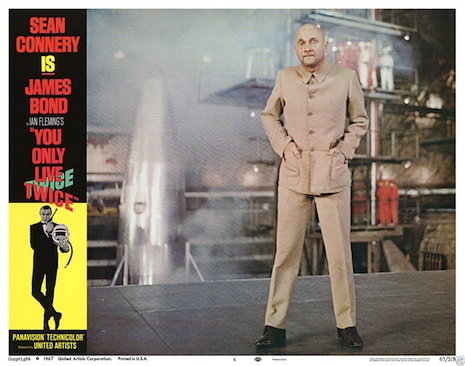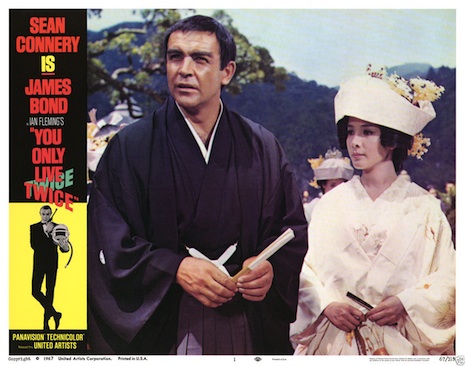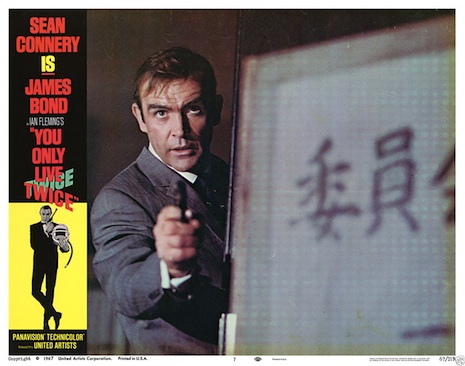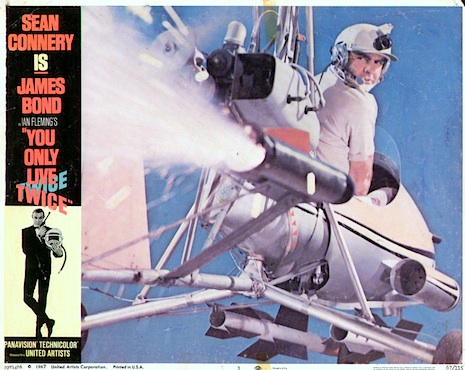During Public Enemy’s ‘war years’, Chuck D was the sensible one who kept the chaotic show on the road. He talks about Black Lives Matter, not getting an invitation to the White House, and why solo rappers like Kanye and Jay Z are losing their minds
It’s funny how rappers who were once explosively controversial, denounced by the press, police and politicians, turn into beloved elder statesmen. Gangsta rap pioneers NWA have been almost canonised by the hit movie Straight Outta Compton. “NWA were a bigger movie than they were a group,” Chuck D says admiringly. His group Public Enemy, meanwhile, were inducted into the Rock and Roll Hall of Fame two years ago. “We don’t get Grammies and shit like that,” says Chuck. “It’s an incestuous circle. We’ve always operated outside the circle and attacked the circle, which makes our existence harder sometimes. When we got into the Hall of Fame, we felt we were properly curated.”
We are sitting in Chuck’s room at the Park Hyatt in Hamburg. Supporting the Prodigy in Europe’s arenas buys a better class of hotel, but Public Enemy have managed on a lot less. Chuck calculates they have played almost 4,000 shows in 104 countries and this is their 104th tour. On Harder Than You Think, which became the theme tune to the 2012 Paralympic Games and their biggest UK hit, he called the band “the Rolling Stones of the rap game”. He remembers telling his label Def Jam in 1990: “I don’t wanna be the guy that’s gonna be doing this shit for 30 years.” He sips his coke, looks at a suitcase leaking clothes and raises his eyebrows. “Duh.”
Chuck’s an “old head” now and he doesn’t mind admitting it. On Public Enemy’s new album, Man Plans God Laughs, he raps “I’m 55, double nickel” because he figures it’s a strength, not a weakness. “Someone says: ‘Chuck, you sound like an old man.’ Motherfucker, I am an old man!” He booms out a big, husky chuckle. “‘You sound like my old, cranky uncle.’ Yes, I am your old, cranky uncle. I’m not trying to not be. I’m cool with that.”
Carlton Ridenhour never really sounded young. He was already 26 when he co-founded Public Enemy in Long Island in 1986, and he sounded as if he already knew everything, with a voice like an angry god. Every element of the band, from the logo to the stagewear to the raging sea of samples, was designed to draw maximum attention to their rebooted Black Power message. Hits such as Bring the Noise, Fight the Power and the Noam Chomsky-inspired Don’t Believe the Hype sounded like urgent instructions. No other group, in hip-hop or rock, has ever expressed political ideas with as much intellect and visceral excitement – the NME hailed them as “the greatest rock’n’roll band in the world”. But they were always thorny, never safe, and they made enemies of liberals as well as conservatives: the black critic Stanley Crouch went as far as calling them “afro-fascist race-baiters”.
Chuck calls this 1987-1991 period Public Enemy’s “war years”, and he was the flak-catcher. “You take the most hits, you get the most scar tissue,” he says in his weighty baritone. “That’s cool. I got no regrets on that. We battled the mainstream, we battled our company, we fought every goddamn minute.”
Chuck likes to say that his interviews are better than most artists’ shows. The man can talk for hours. When they were touring together two years ago, LL Cool J and Ice Cube called his voice “the iron lung” because it never tired. “I could yell over a mountain,” Chuck says. “If I wasn’t MCing, maybe I would be a supervisor yelling across a factory. My father has the greatest, biggest voice of all time. I was like: ‘Just beat me, don’t yell at me!’” He laughs and makes a sound like vibrating walls. I knew he had a sense of humour – he played the spoof black radical Malcolm Y in deleted scenes from Anchorman – but I didn’t expect him to be quite so different from the formidably intense figure on the cover of Public Enemy’s 1988 masterpiece It Takes a Nation of Millions to Hold Us Back. I didn’t expect jovial.
Unlike most rappers, Chuck is rarely autobiographical – he says his life is “irrelevant” to the music – but his background explains a lot. He grew up in the middle-class black suburb of Roosevelt, Long Island (“the first test market for white flight”), old enough to remember the 60s. His neighbours included future bandmates Professor Griff, Hank Shocklee and Bill Stephney, as well as Eddie Murphy. “We were surrounded by like-minded people from similar backgrounds. You feel that way too? You experienced that too?” In middle school, he attended a summer programme called the Afro-American Experience, taught by Black Panthers and student radicals. “They would tell you: ‘No, Columbus did not discover America, this is the real deal.’ So when we went back to school, we presented a problem. We just thought it was the truth.”
Public Enemy hit the ground running; no other band was as informed and opinionated. “We knew what people were not doing. That allowed us to be daring.” They realised they’d only have a short window of opportunity, which Chuck now defines as the two years between Rebel Without a Pause in 1987 and Fight the Power in 1989. “We knew hip-hop moved every two, three years. We knew in the 1990s the new thing was coming in.” So their records were crammed with information that Chuck happily unpacked in interview after interview. “What’s going on with Thatcher? Why is Nelson Mandela still in prison? That type of shit. I felt confident. I was in a group. If I was on my own and it was all swirling around my head, I’d have been loony.”
Did he ever feel out of his depth? “Yeah, I was like, man, I’m having to answer shit on Israel and Palestine and y’all ain’t got this shit together. It’s still a chaotic mess in 2015!” Was he ever wrong? “Of course! Man, there’s things I said 30 years ago where I think I must have been out of my goddamn mind. Who doesn’t think that? Ain’t none of us Jesus.” (He has previously apologised for the early song Sophisticated Bitch and remarks “that wasn’t totally favourable for outside of heterosexual relationships for black people”.)
When the crew were going to clubs in the early 80s, Chuck, who didn’t smoke or drink, was the designated driver. In a way, he became Public Enemy’s designated driver: the sensible one who kept the car on the road while his friends on the backseat were acting crazy. Public Enemy was meant to be a lively democracy, with Chuck mediating between the goofy, anarchic Flavor Flav and the stern, ultra-militant “Minister of Information” Professor Griff, but that didn’t pan out. “I eventually had to assume the role of boss because if you decide to slide away from the steering wheel, the car could go off the cliff.”
We both know what he’s talking about. Public Enemy’s biggest crisis blew up when an overworked Chuck assigned some interviews to Griff, who, in 1989, told the Washington Times that Jews were “responsible for the majority of wickedness that goes on across the globe”. The situation was toxic for Public Enemy, not least because many of their closest collaborators were Jewish. Chuck tried to defuse the crisis without throwing Griff (who apologised too late) under the bus but his compromise solution ended up pleasing nobody. Collectively branded antisemites, the group briefly broke up and, says Chuck, “probably could have collapsed if I wasn’t the main motherfucker”. In the absence of such intense media scrutiny, he gives his bandmates space. He doesn’t publicly criticise Griff for giving paranoid lectures about the Illuminati, just like he didn’t knock Flav for becoming a clownish reality TV star. Sometimes he seems like a long-suffering sitcom dad. He says touring is “like being trapped in an ice-cream truck”.
Hard though it was playing “paintball” with the media, Chuck thinks it was easier to deal with the press, radio and TV than it is to handle the internet. “I’m swimming in a pool and I can manage in a pond but then you’re thrown into the Black Sea,” he says. “A lot of people aren’t literate on how to swim in the web and not believe the hype. Ha! Sounds like a song.”
In July, Chuck experienced his first Twitterstorm after he criticised attempts to erase Bill Cosby’s legacy. “No way I’m defending Cosby. But this wiping history out with a swoop is akin to Nazi book burning. Context is everything. Phil Spector still plays,” he tweeted.
Was he surprised by the backlash? “It surprised me that I was trending because I didn’t know what trending was. But I’m not into social media being this immediate lynch mob either.” He says Cosby’s alleged offences were “really criminal” and has no affection for the man. “I saw him one time and he was talking to Will Smith most of the time.” But he insists: “It’s not like a hard drive where you can say his life didn’t count. The data removal of somebody’s existence is what I was pissed about. When I was talking about the data removal being a problem, people were coming at him hard because (a), He’s Dr Huxtable, Mr America, and (b), he’s drugging chicks. I understand that.” He admits that it’s a distinction not everyone thinks is worth making. “My wife had a different point of view: ‘You’re wrong for saying that.’ I understood that. She’s an academic star in her league.” (Gaye Theresa Johnson is an associate professor at UCLA.)
I think Chuck got into trouble because he’s more interested in critiquing patterns of behaviour than individuals. He studies group dynamics: bands, sports teams, industries, political systems. So he thinks the N-word is being “ridden to success” by “lazy” rappers, but won’t name names. He likes conscious, rebellious hip-hop (Kendrick Lamar, Run the Jewels, Kanye West’s Yeezus) but, unlike some old Public Enemy fans, doesn’t expect every rapper to be political. He thinks the music industry is racist but won’t pin it on white MCs such as Macklemore. “KRS-One says we understand that these are the barriers of race but beyond that we are hip-hop. Yeah, you’re white in the United States of America. There’s gonna be people who relate to that and structures that’s gonna be able to cosign it quicker than a black guy who did it before. I’ve always fought to change the system. Individual MCs are a product of systematic conditioning. But Macklemore and Ryan Lewis? I thought it was fantastic.”
His main beef with modern hip-hop is simply that there are too many solo acts and not enough groups. “When I look at a guy like Kanye or Jay Z, the guys who are successful individuals, they’re fucking batty,” he says. “They’re out of their goddamn minds. They got no team. I’m a fan of Kanye’s rebellion. I’m not a fan of one-man teams as much. The thing that inspires me is I’m with my team. One person on stage, after 18 minutes they’d better be juggling lawnmowers or eating fire.”
He’s surprisingly diplomatic. Would he have made a good politician? “Hell, fucking no!” Why not? “Because I’m a culturalist. I’m damn near a fucking hippy. The closest I would be to any office is cultural ambassador.”
Chuck believes that “all these governments are full of shit”, but he supported Obama in 2008 and still does. “I dug him. I dig him. I don’t make any attacks on the president. You see how much he’s aged physically because if you have a good heart and you want to see it make a change then you know you’re going up against the perfect storm every fucking minute.” He grins. “My questions are real practical. One, how the fuck does he get some sleep? Two, how does he keep his old homeboys away?”
The Obamas know Public Enemy’s music – their first date was a showing of Spike Lee’s Do the Right Thing, which features Fight the Power 15 times – so did Chuck expect a White House invitation like Jay Z? “Oh no,” he booms. “No! I would have been naive and stupid and self-centred to think: ‘Oh man, the president’s gonna invite me to the White House!’ That’s fucked up. Just listen to that sentence.”
Chuck finds it strange to be older than the president. He has always sought the counsel of his elders. When Public Enemy were starting out, he consulted Black Power veterans such as Huey Newton, Malcolm X’s widow Betty Shabazz and the Nation of Islam’s Louis Farrakhan. When the band entered the Rock and Roll Hall of Fame, he insisted they were inducted by Harry Belafonte rather than a younger rapper. You could say the modern equivalents to the young Chuck D are Ta-Nehisi Coates or Deray Mckesson of Black Lives Matter, but he hasn’t read Coates and doesn’t want to elbow his way into a new generation’s struggle uninvited.
“You have to pay attention to their energy and concern,” he says. “Black Lives Matter are responding to a gaping need and they’re being vocal about it the best way they can. I didn’t go to Ferguson but don’t be talking about how that shit ain’t good. I salute everyone who went to Ferguson.”
It comes back to acting your age, he says. He feels that there’s a “missing generation” of black activists in their 30s or 40s who can guide and advise young protesters. “They’re invisible to me,” he says. “I think what we’ve seen in the past 20 years has been a loss of how to age gracefully.” Chuck believes in continuity. He sees himself as a link in a chain much longer than hip-hop: Paul Robeson inspired Belafonte, who inspired Bob Dylan and Curtis Mayfield, who inspired Public Enemy. Through his record label, SLAMjamz, and internet radio channel, Rapstation, he mentors young rappers and DJs. “I say to people, how can I help? If I can’t help, this shit is a fucking waste.”
If Chuck were really an “old cranky uncle”, he’d be rubbing old wounds and grouching about how things were better in his day but he describes himself as “a realist and an optimist”, qualities that save musicians and activists alike from a bitter, disappointed middle age. He still talks about white supremacy, inequality and the prison industry but his searing, unapologetic rage seems to have evolved into something warmer and more philosophical. It was always obvious he was smart when it came to politics. It turns out he’s smart about life, too.
After the interview, he removes his black Public Enemy baseball cap to rub his shaved head and we spend another 15 minutes talking about raising daughters. He is about to miss a week of the Prodigy tour so that he can go home to his four-year-old. His older daughters, 22 and 27, are successful professionals. “I wasn’t gonna sacrifice family for the sake of the stage,” he says. He has some long-term parenting advice for me: “You gotta map some of this shit out. Your nine-year-old is going to be 24 in 2030. What will the world be like in 2030?”
Does he think it will be better or worse? He sighs and throws out his hands. “Life is life. Life is a fight, man. In the middle of the smoke, you fight to breathe.”
Man Plans God Laughs is out now. Public Enemy tour the UK with the Prodigy from 24 November
It's in my eyes, and it doesn't look that way to me, In my eyes. - Minor Threat
Monday, November 30, 2015
Chuck D: 'We battled the mainstream, we battled our label, we fought every goddamn minute'
Sunday, November 29, 2015
Japanese Department Store
May Want to Look Up the Word 'Fucking'

If only we could have sat in on the meeting where the marketing team for this Osaka department store came up with the idea for their "Fuckin' Sale," spotted early this month by a reader of Jake Adelstein's Japan Subculture blog.
-There should be some cool English words on these signs.
-How about "Fuckin' Sale?"
-What's that mean?
-Fuckin' means, like, really good. So it's a really good sale.
-And there's no other meaning to "fuckin'? Nothing at all that might embarrass us on the internet? Remember what happened with our Save-a-Shit-Ton promotion…
UPDATE:
Mortified Japanese Department Store Cleans Up 'Fuckin Sale'
Saturday, November 28, 2015
He gave his unforgettable work for nothing. Shouldn't the designer of the peace symbol be commemorated?
The logo that Gerard Holtom created without copyright for an anti-nuclear war protest group in the 1950s has been perennially adopted and adapted around the world ‑ perhaps most memorably in the wake of the Paris attacks..click on the source link above for my images and stories.
In the early evening of 21 February 1958, a middle-aged man travelled right across London from his home in suburban Twickenham to a shabby Victorian building in Finsbury Park. Among the press of commuters Gerald Holtom stood out as someone slightly different – “arty-looking”, as they used to say – with a portfolio under his arm and disorderly hair that hadn’t been smoothed with Brylcreem or trapped by a hat. Eventually, after a journey by green suburban train and then a change of tube, he reached the top of Blackstock Road and a dark doorway next to a familiar landmark: Fish & Cook, printers and stationers. Holtom walked up the stairs to an office where several people who would soon be of interest to the Special Branch had already gathered. “So, Gerry, let’s see what you have for us,” one of them said. Holtom untied his portfolio and took out some sheets. “I’ve tried a simple approach,” he began …
The film script at this point would call for puzzlement and a gathering sense of outrage among Holtom’s small audience. “But we wanted a dove,” somebody says. “Or an olive branch,” says another. “Or a cheek in the act of turning,” says a third. “This business of the three lines inside a circle won’t do at all.” These sunflowers will never sell, Monsieur van Gogh. Conventional narrative calls for rejection and dejection before the artist gathers his strength, tries again, and this time triumphs. In fact, the meeting of the Direct Action Committee Against Nuclear War (DAC) seems to have liked Holtom’s design without any equivocation. According to Peace News’s honorary archivist, Bill Hetherington, it was “immediately accepted” as the symbol for the demonstration that the committee had planned for Easter. On Good Friday, which that year fell on 4 April, it made its first public appearance when it was carried aloft on the 52-mile march from Trafalgar Square to the Atomic Weapons Research Establishment at Aldermaston in Berkshire.
This was the first of the big Aldermaston marches, and the last one to have Aldermaston as its finishing point. All future marches went the other way, reflecting the difference between DAC and its successor as the march’s loudest voice, the Campaign for Nuclear Disarmament. DAC wanted to draw attention to the unobtrusive manufacture of nuclear bombs in the home counties: to protest at the thing itself. CND favoured the more traditional pattern of British dissent – a march on London – and the publicity that came with a climactic moment only a few hundred yards from Fleet Street and Westminster, the twin centres of media and political power. But whatever the sectarian differences that existed inside the anti-nuclear movement, Holtom’s symbol remained common to all.
Nobody had rights to it. Holtom himself had never claimed copyright; he wanted the design to be freely available to any group who fought the same cause. It success was almost immediate. By 1964, the writer Christopher Driver (a pacifist, later to edit the Good Food Guide) could justifiably describe it as “probably the most powerful, memorable and adaptable image ever designed for a secular cause”. The rest of the world adopted it for other movements – in the US, it stood for feminism and civil rights as well as opposition to the Vietnam war – so that it slowly lost its strict association with the phrase “ban the bomb” and came instead to represent peace and justice more generally, especially when those ideas conflicted with the establishment view. It has had several enemies – in 1973, South Africa’s apartheid government tried to ban it – but rather more adaptors. The encircled A of anarchism may have its roots in the 19th century; the A may stand for anarchism and the O for the order that A is the mother of (Proudhon said that, apparently); but it’s hard not to suspect that its popular form as a punk monogram took Holtom’s design as its inspiration.
Earlier this month a French graphic designer, Jean Jullien, turned the internal lines into an instantly recognisable Eiffel Tower by adding three short brush strokes – a couple of horizontals at the base and an extension of the vertical so that it broke the circle. It may be the most memorable adaptation in the symbol’s 60-year history, and according to Jullien it sprang from “an instinctive, human reaction [rather than] an illustrator’s reaction”. Within 24 hours of the attacks, it had been printed on T-shirts, posters and flags. An unwatched child might have drawn it, but (or and) it managed to convey both sorrow and hope. Jullien said that in his opinion “the strongest images are the ones that don’t require any deep background in culture or art history to decipher … It needs to be something that people from different backgrounds can recognise automatically … You understand before you decipher the image, and I think with words, sometimes, the barrier is higher.”
But Jullien had the Eiffel Tower. Why Holtom drew what he did is harder to explain. According to one school of thought, the lines inside the circle form a composite of the semaphore for the letters N and D, standing for Nuclear and Disarmament. Holtom himself, writing in 1973, believed his design to be a kind of self-portrait: “I was in … deep despair. I drew myself … with hands palm outstretched outwards and downwards in the manner of Goya’s peasant before the firing squad. I formalised the drawing into a line and put a circle round it.”
Both explanations seem after the fact and too literal. Drawings, like sentences, can come out of an unknowable elsewhere. And who in any case needs an explanation? I remember my first sight of what I thought of as a CND badge: how taken I was with the elegance of its white-on-black design, how pure it looked and yet how rebellious and mysterious. It was 1961. I travelled by train to collect more badges, and literature too, from a friendly doctor’s wife in the next to nearest town. I was a sincere unilateralist, not simply a badge-lover, but I noticed that among the one or two of my school friends who agreed to take a badge there was an aesthetic appreciation of the tin buttonhole itself. Logos are commonplace now – rarer then. There was the circle and straight line of London Transport, of course, and the RAF roundel, but otherwise the tendency in the 1950s still ran towards heraldry and initial letters made illegible through compression or entanglement. What Holtom’s badge was, above all, was new.
He died aged 71 in 1985. He was a graduate of the Royal College of Art, a conscientious objector in the second world war, and an early anti-nuclear activist. So far as I can tell, he never made a penny from his design or wanted to. Should he not have a memorial or plaque? This week I discovered that in the 1960s an office block had replaced his house at 2 Holly Road, Twickenham; there seems little point in remembering him somewhere so changed. On the other hand, the Finsbury Park building that he visited with his portfolio in February 1958 still exists. The meeting that adopted his design was held in room then occupied by Peace News, which long ago left for King’s Cross. Today the offices belong to a solicitor. Down below, miraculously, Fish & Cook is still selling stationery, though via a Mr Raj rather than a Fish or a Cook. The shop sits among Algerian cake shops, halal butchers, Ethiopian delicatessens and Chinese noodle bars. Here surely is a fitting place to remember the man who drew for peace.
Friday, November 27, 2015
Employer will pay employees to stay home on Black Friday and urges Black Friday shoppers to go outside instead

from Think Progress:
This Store Just Canceled Black Friday
Outdoor goods retailer REI announced that on top of being closed on Thanksgiving Day it will also keep its doors closed on Black Friday this year.
On Tuesday, the company announced that its 12,000 employees will get a paid day off on November 27 in an effort to get more people to go outdoors, and its website will feature a black screen.
“We’re closing our doors, paying our employees to get out there, and inviting America to OptOutside with us because we love great gear, but we are even more passionate about the experiences it unlocks,” CEO Jerry Stritzke said in a statement.
REI isn’t the first to come up with the idea of discouraging people from shopping on Black Friday, a day when most stores feature special sales and promotions to get people in the door. For the past two years, REI competitor Patagonia has urged customers to swap items and re-wear old ones rather than buy new gear.
Many stores have gone in the opposite direction and extended Black Friday into Thanksgiving, forcing employees to come to work on the national holiday. REI was among the 18 that allowed all employees to stay home on Thanksgiving and confirmed to ThinkProgress it will do the same this year.
It’s not alone in the decision to close on Thanksgiving this year. So far, Staples, GameStop, and Mattress Firm have all said they won’t open so as to let employees celebrate with family and friends. Last year Staples had been counted among the 12 brands with shopping hours on Thanksgiving, collectively requiring thousands of workers to come in. While many claimed those workers volunteered, employees at Kmart and Target said they had no say over whether they were scheduled then and risked getting fired if they refused.
The tide may be turning against the early hours. Sales numbers from last year showed that while people shopped on Thanksgiving, they didn’t increase overall holiday purchases, simply shifting what they would have spent on Black Friday to the holiday itself. There was also a strong consumer and legislative backlash against the idea of stores opening on Thanksgiving.

Thursday, November 26, 2015
Holiday thoughts...


(click on the image below to read full size)

previous Thanksgiving post:
Celebrate Thanksgiving with a little reality check

Wednesday, November 25, 2015
Scientists name "muscular" fossil fireworm
after Henry Rollins
In the never ending mashup of cool nerds and music enthusiasts, a group of scientists from the University of Bristol in the UK and the Natural History Museum in London have named a newly discovered species of particularly muscular fossil fireworms after D.C. hardcore punk rocker (who has worn many creative hats throughout the decades), Henry Rollins.During a study of the fossilized remains of the Rollinschaeta myoplena (fossilization is a rare event in nature when it comes to worms) the team was able to determine the species was a close relative of earthworms and leeches as well as a member of the “fireworm” (or “Amphinomidae”) family. All of which (unlike Mr. Rollins), have soft bodies. Comparatively speaking, this worm’s got a six-pack, in worm terms.
The fossilized remains of Rollinschaeta myoplena
According to Greg Edgecombe of the Natural History Museum, (the co-author of the study) this was the first time that “any fossil has been identified by its muscle anatomy.” Sadly, the Rollinschaeta is extinct so we can’t all run out and start a new hardcore punk rock worm colony in our basements.No word on what Rollins thinks of all this, but he joins a growing list of musicians who have had animals speciesnamed after them like Lou Reed, whose name is now synonomous with a species of velvet spider known as Loureedia, David Bowie provided the namesake for a rare type of Malaysia spider, Heteropoda davidbowie, and Frank Zappa who had the distinct honor to have a jellyfish named after him, the Phialella zappai.
Zappa has an even stranger claim to scientific immortality: a type of bacteria that causes pimples was dubbed Propionibacterium zappae:
Loureedia annulipes, an underground-dwelling genus of velvet spider discovered in Israel
‘Spider from Mars’: Heteropoda davidbowie, discovered in Malaysia in 2009.

Tuesday, November 24, 2015
in the Spirit
Killer Mike Gives the Killer Introduction
Bernie Sanders LIVE from Atlanta
Introduction and the entire speech
just the Killer introduction
Monday, November 23, 2015
Sunday, November 22, 2015
Saturday, November 21, 2015
LET'S INVADE CANADA
Henry Rollins
from Henry's LA Weekly column:

Give me a minute before I explain to you that our invasion and occupation of Canada is a mission that cannot wait. Operation Maple Dawn Cobra Thunder must go hot ASAP.
Last month, I spent two weekends in Canada. Edmonton and Toronto, respectively. Both trips were to service and promote a film I am still involved with years after its completion, called He Never Died.
The visit to Edmonton was to be on hand for DEDfest, where I presented the film and answered questions afterward. This is the third of these screenings I have done this year.
Horror-film fans are a blast. They cheer at violence and laugh at the misfortune of others. I felt right at home.
That being said, whenever I arrive in Canada, it always takes me a few hours to adjust to all the politeness and lack of cynicism. As an American, you might very well believe the Canadians are soft, and their borders will no doubt be breached at any moment by hordes of dangerous brown people, bringing with them all manner of vampiric sloth and extremist rationalizations.
Our neighbors to the north are a problem, aren’t they? Drowning in decency and socialist Kool-Aid, these squishy sacks are going to bring the entire continent to its knees with health care for all and an emphasis on education.
As if you really want to live in a country with a low homicide rate, full of kind-minded intellectuals. A life without the constant sound of gunfire. Without never-ending wars, both domestic and abroad. Ugh!
I agree, it would be super-boring. But hey, it’s their country (for now) and these flouncing nellies can use their illusion until their quasi-commie unicorn dream runs out of rose-colored steam. When they emerge from the euphoric ether of goodwill, they hopefully will have learned their lesson and understand that the world is an awful place, full of bad guys with guns. Maybe at that point they will wipe those anarchy-inspired smirks off their faces and get to work.
You see the clear and present danger, don’t you? You’re absolutely right, patriot: The illegals (amigos de Obama) will be using the US of A as a ramp to vault themselves into Canada, the new promised land.
Why, those bastards will be running to our northern border so fast, they won’t have time to clip your hedges, clean your house, take care of your kids and repair your roof at amazingly low wages. All they’ll want is to get to sweet home Vancouver.
If things get any better in Communada, we’ll have no more illegals. Finally, real Americans will be doing the jobs that just a few years before they swore they didn’t want to do. Good thing we’re damned adaptable.
You realize that Donny Trump wants to build the retaining wall along the southern border to keep people from leaving, right? I see grim days of manual labor at low wages ahead.
You probably won’t believe this but, more than once, when walking the streets of Toronto a few days ago, I saw several people doing cartwheels! No, really. I witnessed elderly citizens rolling by, frisky like dogs in the park on the first day of snow.
I asked them what the hell compelled them to such visible displays of seemingly limitless joy. “Justin Trudeau! Wheee!”
Yeah, the DPRC just elected a 43-year-old hipster as its 23rd prime minister. Ooooh! Justin (and I bet it’s “cool” to call him that) was born on Christmas Day. He’s the son of Pierre Trudeau, the country’s 15th prime minister.
Justin’s into … peace! I can smell the patchouli and failure from here. Wait until this handsome, smart, energetic young man, who won by a landslide over Stephen Harper (who I wish would hurry the hell up and become an American citizen and hurl himself into the 2016 elections, because the GOP needs more go-getters on those debate stages), finds out that the only thing that ensures peace is capitalism, drone strikes and boots on the ground.
A year from now, the skyline of Ottawa, Canada’s capital city, will be corrupted by mosques. Then it will be Justin Bin al Trudeau, surrounded by his phalanx of Islamic thugs. You will think of Canada as the Mecca of the north. You watch, they’ll even have their own hajj — where of course, no one will get hurt and there will be plenty of water and restrooms. But it will be a hajj just the same!
All the great work we have done over decades to improve the lives of Canadians by bringing them McDonald’s, Home Depot and Starbucks will be left thanklessly behind for solar panels and wind farms. This dictator wants to reduce Canada’s emissions! A nation will be deprived! Jihad, eh?
And this is why, for the love of all things good, we must conquer and neutralize the other Red Menace: Canada.
It is time for Operation Maple Dawn Cobra Thunder! A great man once asked, “Is our children learning?” but he also said, “Borders no longer protect us.” It is time to flip the script and make these eco-freaks on the north side understand that borders no longer protect them.
You know what they call getting them before they get you? That’s right, winning. Under Imam Trudeau, Canada’s progressive policies will become a virus that will empower women, gays and other fringe-element actors to become part of the new mainstream.
We have got to strike before equality takes an even firmer foothold in Canada. Because when that happens, you think they’re just going to sit still?
It is go time in America. Canada has been unleashed. Wake up and smell the thunder.
Friday, November 20, 2015
"All I Wanted Was a Pepsi"
The Decline of ‘Big Soda’

The drop in soda consumption represents the single largest change in the American diet in the last decade.
By MARGOT SANGER-KATZ
Five years ago, Mayor Michael A. Nutter proposed a tax on soda in Philadelphia, and the industry rose up to beat it back.
Soda lobbyists made campaign contributions to local politicians and staged rallies, with help from allies like the Teamsters union and local bottling companies. To burnish its image, the industry donated $10 million to the Children’s Hospital of Philadelphia.
It worked: The soda tax proposal never got out of a City Council committee.
It’s a familiar story. Soda taxes have also flopped in New York State and San Francisco. So far, only superliberal Berkeley, Calif., has succeeded in adopting such a measure over industry objections.
The obvious lesson from Philadelphia is that the soda industry is winning the policy battles over the future of its product. But the bigger picture is that soda companies are losing the war.
Even as anti-obesity campaigners like Mr. Nutter have failed to pass taxes, they have accomplished something larger. In the course of the fight, they have reminded people that soda is not a very healthy product. They have echoed similar messages coming from public health researchers and others — and fundamentally changed the way Americans think about soda.
Over the last 20 years, sales of full-calorie soda in the United States have plummeted by more than 25 percent. Soda consumption, which rocketed from the 1960s through 1990s, is now experiencing a serious and sustained decline.
Sales are stagnating as a growing number of Americans say they are actively trying to avoid the drinks that have been a mainstay of American culture. Sales of bottled water have shot up, and bottled water is now on track to overtake soda as the largest beverage category in two years, according to at least one industry projection.
The drop in soda consumption represents the single largest change in the American diet in the last decade and is responsible for a substantial reduction in the number of daily calories consumed by the average American child. From 2004 to 2012, children consumed 79 fewer sugar-sweetened beverage calories a day, according to a large government survey, representing a 4 percent cut in calories over all. As total calorie intake has declined, obesity rates among school-age children appear to have leveled off.
The change is happening faster in Philadelphia than in the country as a whole. Daily soda consumption among teenagers, a group closely tracked by federal researchers, dropped sharply — by 24 percent — from 2007 to 2013, compared with about 20 percent for the country. Last month, the city Department of Public Health reported a sustained decline in childhood obesity over the last seven years.
Those reductions are not accidents. The soda tax didn’t pass. But the debate about it, along with a series of related city policies, helped discourage people from drinking soda.
The Philadelphia school district forbids the sale of sugary beverages in schools and limits their availability in public vending machines. The city provides financial incentives for corner stores to highlight healthy foods. And it sends educators into public school classrooms to teach children about nutrition.
Philadelphia, which also has one of the country’s strictest menu-labeling laws, for two years ran radio and television ads encouraging parents to think twice about serving sugary drinks to their children.
“It’s a fight every day, and you just have to stick with it,” said Mayor Nutter, who will leave office in January. “You can’t give up, because it’s just really important.”
But while Philadelphia’s enthusiastic attention has led to outsize results, soda consumption is declining even in cities and towns that have not made big local investments in obesity prevention and public health. The public health community has coalesced around an anti-soda message, and health officials and industry experts agree that public attitudes about soda and consumer tastes are shifting in ways that may be permanent.
The beverage industry continues to fight these shifts — and especially to fight taxes on its products. But it is also aware that after decades of selling a handful of popular, iconic products, changing public attitudes are leading to a profound change in the nature of the business.
The New Tobacco
This summer, executives from the beverage industry gathered at the Harvard Club in New York City. The annual event, hosted by the trade magazine Beverage Digest, featured speakers from the three largest soda makers — Coca-Cola, PepsiCo and the Dr Pepper Snapple Group — along with smaller upstarts, like SodaStream, the home seltzer maker company, and Talking Rain, which makes no-calorie carbonated fruit drinks called Sparkling Ice.
Along the wood-paneled walls, croissants, fruit and silver urns of coffee were laid out. But the hot drinks were largely ignored. The industry’s rapidly expanding bounty was displayed in the center of the room. In an array of ice buckets were Snapple Sorta Sweet, Squirt, Tropicana Farmstand juices, Lipton Sparkling Iced Tea. In a back corner, attendees could make their own lime-basil and coriander apple blossom sodas with a SodaStream machine.
Such events give companies a chance to show their stuff and brag about their successes, but there was nothing bubbly about the atmosphere. This is an industry grasping to master the shifting market.
As John Sicher, Beverage Digest’s publisher, put it in his blunt opening remarks: “It’s been a really challenging decade. It would have been a lot rougher if not for bottled water.”
As sales of the companies’ mainstay products have declined in the United States, the companies have scrambled to offer new products better suited to consumer tastes. Iced teas, sports drinks and flavored waters are smaller but fast-growing segments of the beverage industry. Coca-Cola, for example, has nearly doubled the number of individual products it offers, to 700 this year from 400 in 2004. And companies are increasingly experimenting with smaller packages for sodas, for which customers will pay a higher price per ounce. At the Harvard Club, there was a 7.5-ounce Pepsi minican, which promised “real sugar” instead of high-fructose corn syrup, and a diminutive eight-ounce bottle of Sprite.
“There’s consumers out there that don’t want to consume too much,” said Regan Ebert, the senior vice president for marketing at Dr Pepper Snapple Group, in her presentation on how the company markets its products to Hispanic audiences. The small cans, she said, “do a good job of solving that need for consumers.”
READ THE REST OF THE ARTICLE HERE http://www.nytimes.com/2015/10/04/upshot/soda-industry-struggles-as-consumer-tastes-change.html?utm_source=nextdraft&utm_medium=email&referer&_r=0
Thursday, November 19, 2015
There's Method To The Mad Satire Of 'Censorship Now!!'
(the new book from Ian Svenonius)

Ian Svenonius is a strange man. Anyone who's followed his career over the past 25 years knows he has a knack for incendiary sloganeering that often borders on the surreal, first as the singer in the legendary Washington, D.C. punk band The Nation of Ulysses (he currently leads the "crime rock" group Chain and the Gang) then as the author of the nonfiction books The Psychic Soviet and Supernatural Strategies for Making a Rock 'n' Roll Group. In his stylish, suit-and-tie persona as a pop-culture gadfly and revolutionary rhetorician — which may or may not be a self-caricature; part of his appeal is his Andy Kaufman-like commitment to character — he's put forth ideas as bizarre as comparing Fidel Castro to The Velvet Underground. Favorably, of course.
Svenonius' new book is Censorship Now!!, and the title alone shows just how provocative the author can be. A collection of essays previously published by Vice, Jacobin, and others, it sets up numerous enemies — both real and straw — for Svenonius to knock down. "The Historic Role of Sugar in Empire Building" comes across as a mini-parody of Mark Kurlansky's Salt: A World History; "The Documentary Crisis," which decries the truthiness of today's documentarians, is an uneven mix of undergrad opinion paper and Old-Man-Yells-At-Cloud rant. It's all couched in a style that's part anarchist tirade, part postmodern critique, and part punk-rock snottiness — yet it's addictively ridiculous.
Svenonius has many targets, but he saves most of his wit, grace, and savagery for mass media and pop culture. In "The Artist and Immortality," he sends up the entire pseudo-intellectual discourse surrounding rock culture (cutely citing his own former band The Nation of Ulysses as if he were a detached observer); in "The Rise and Fall of College Rock," he rails against the media outlets he feels have helped gentrify the radio dial (including, ahem NPR).
He slips earnestness inside the cartooniness, even when Censorship Now!!'s title essay lays out his most modest proposal — a universal censorship that will free humanity from all oppression. Swiftian and Stalinist in equal measure, it's a piece of logic-twisting polemic that serves what may be Svenonius' ultimate purpose: To jar us, like some Zen riddler, from our accepted ways of thinking.
The crazy talk just keeps on coming — except when it isn't. Here's his conspiracy theory behind the hard-to-read instruction manuals that come with cheap furniture, which he says sow discord between otherwise happy romantic partners: "Ikea wants couples to break up. Each breakup results in more bachelors and bachelorettes, which results in more Ikea products sold." And his reasons why people shouldn't tip service industry workers: Gratuity is "an exploitative business model," "an act of dominance," and "a guilt fee." The Ikea idea is gleefully ridiculous; the anti-tipping sentiment, on the other hand, is one that's actually gaining ground in places like New York City, where there's a trend of restaurateurs abolishing gratuity in favor of raising the hourly wages of their employees.
This is why it's difficult to tag Censorship Now!! as a wholesale work of satire — and why the book, for all its entertaining lunacy, sometimes muddles its own voice. For every burst of inspired argumentum ad absurdum such as "Music and the Struggle Against Sanity," there are maddeningly reflexive statements such as "For many poor souls, there is no alternative to the alternative."
It's as though the front and back covers of Censorship Now!! are two mirrors placed on either side of Svenonius, infinitely reflecting his prankish screeds and paradoxical theories. The greatest paradox of all, of course, is that Censorship Now!! itself would be banned under the outlandish plan proposed in its title, a clear shot at the arbitrary way we view and apply the ideals we hold most dear. It's Svenonius' strangest punch line — and his most playfully profound message.
Jason Heller is a senior writer at The A.V. Club, a Hugo Award-winning editor and author of the novel Taft 2012.
GET THE BOOK directly from the publisher HERE.
Wednesday, November 18, 2015
Before Google, There Was the Patient, Long-Suffering Staff of the New York Public Library
from PICTORIAL:
Once upon a time—midcentury America, to be precise—you couldn’t turn to the Google search bar with all your most deeply personal and/or random questions. Instead, there was the New York Public Library and its very patient librarians.
As NPR explained back in December (and our compatriots at io9 reported), the NYPL’s Reference and Research Services has fielded all manner of questions for decades. They stumbled across a box of queries from the 1940s through the 1980s, and they’ve been sharing them on their Instagram every since. Unless you’re following the account, you’ve been missing some gems. For instance:
Surely this came not from somebody with a very poor understanding of lunar cycles, but rather a pre-Internet troll.
If you have any questions for which Google just isn’t getting the job done, you can still turn to the NYPL. In the meantime, here’s a free prompt for a mystery novel.
Contact the author at kelly@jezebel.com.
Photos via the NYPL’s Instagram.
Tuesday, November 17, 2015
Smartphone Suck:
Photos depict evil screens that are stealing your soul!
Perhaps the disparaging “Smartphones and IPhones are ruining our society and slowly turning us into zombies” fad is getting a bit stale. I do understand why many people see phones as a brainsuck (and if you text while you drive, you’re a supreme asshole who might as well be drunk driving). But as I’ve said before, I love my iPhone. I just use it in moderation. That’s the key. It’s not rocket science. If I’m having dinner with someone, I put my damn phone away and concentrate on the person or people I’m sitting with. I don’t check my phone. Not even once. (My husband refuses to carry one to begin with, which is taking it to an extreme probably…).Now on to the “SUR-FACE” the photo series by French photographer, Antoine Geiger. What you see are seemly casual photos of people using their smartphones that turn somewhat sinister once the face is stretched and pulled into the phone. Like our phones own us, not the other way around.
“It [places] the screen as an object of ‘mass subculture,’ alienating the relation to our own body, and more generally to the physical world,” Geiger writes in his description of the series.
Via Nerdcore and The Creators Project
Monday, November 16, 2015
"School of Life" Monday's Watch and Listen This Week: HISTORY OF IDEAS - Religion
Religion was an ingenious solution to many of mankind's earliest fears and needs. Religion is now implausible to many, but the needs remain. That is the challenge of our times. Please subscribe here: http://tinyurl.com/o28mut7
Help us to continue making films by visiting our online shop: http://theschooloflife.com/shop
Sunday, November 15, 2015
Saturday, November 14, 2015
Friday, November 13, 2015
Celebrate Friday the 13th w/ the fake DogTown flick
"The Lords of DogTown"
It kinda sucks, but there's some good moments, the kid who plays Jay (Emile Hirsch) did a great job. For someone so close to it, it's hard to watch, but if you never have, and are at all interested, you kinda have to... see what hollywood can do.
Thursday, November 12, 2015
Wednesday, November 11, 2015
Celebrating 90 years of the Harlem Globetrotters
with STOMP
The Globetrotters will celebrate their 90th year with over 330 games in more than 260 cities in North America starting December 26, 2015. The tour’s opening week will bring 10 games to six arenas in the NYC-area, including Madison Square Garden, Barclays Center and Prudential Center. The full schedule and ticket information can be found at harlemglobetrotters.com.
thanks, Presurfer
Tuesday, November 10, 2015
Monday, November 9, 2015
"School of Life" Monday's Watch and Listen This Week: POLITICAL THEORY - Henry David Thoreau
We are taught to think of modern civilization as inherently 'better' than the pre-industrial age - and take great pride in our gadgets and technology. That's why we need to tap into the caustic, liberating mindset of the great American political thinker, Thoreau – who escaped modern civilization to go and live in a cabin in the woods…
Brought to you by http://www.theschooloflife.com
Sunday, November 8, 2015
Saturday, November 7, 2015
Behind the scenes with James Bond in
'You Only Live Twice'
The revolution of the sixties kicked off on October 5th, 1962. This was the day The Beatles released their first single “Love Me Do” and Sean Connery was launched on to the big screen as James Bond in Dr. No. Between these twin poles of movies and music the decade began. By 1967, The Beatles were the most influential band on the planet while Connery was the world’s best known actor, and iconic star of the most successful movie franchise of all time.During the filming of the fifth James Bond movie You Only LIve Twice journalist and presenter Alan Whicker—best known for his rather snide, tabloid and often condescending reporting—made a documentary examining the success and cultural obsession with Ian Fleming’s super spy, or as he termed it “Bondomania.” Whicker bangs on about sex, sadism, amorality and violence, quizzing Connery, producers Cubby Broccoli and Harry Saltzman, and screenwriter Roald Dahl—who disagrees with Whicker’s insinuation, describing Bond as a “tough, rather insensitive fellow who’s very good at his job.”
The Bond format of gadgets, girls and guns was set by the previous two movies Goldfinger and Thunderball. This time Dahl’s screenplay pushed the form to the limit—dumping most of Ian Fleming’s original novel and inventing his own comic book narrative—an action scene on average every five minutes—throwing Bond into unrelenting danger until the final climactic moments.Dahl considered You Only Live Twice to be “Fleming’s worst book, with no plot in it,” and he therefore filled the movie with his own quirky inventions—rocket gobbling spacecraft, a volcanic island disguised as a mini Cape Canaveral, and so on. I think Dahl’s criticism harsh, as I am on the side who think Fleming’s books are actually superior to the films, as they reveal a conflicted Bond, insecure, violent, remorseful, smoking, drinking and popping pills to keep himself functioning. Fleming gave Bond an emotional narrative—from strong, confident agent to broken, haunted spy obsessing over his own mortality—which the films have generally ignored.
You Only Live Twice was the last Bond novel published in Fleming’s lifetime—he died of a heart attack, aged 56, two months after its appearance—the last novel The Man with the Golden Gun and the story collection Octopussy and The Living Daylights were published posthumously. The film was to be Connery’s last Bond until Diamonds Are Forever in 1971. The title comes from a haiku Bond writes when he is “reborn” as “Taro Todoroki,” a mute Japanese coal miner, to gain access to Dr. Guntram Shatterhand or rather Ernst Stavros Blofeld’s Garden of Death.
You only live twice:
Once when you are born
And once when you look death in the face.In Whicker’s film Sean Connery ‘fesses up to having only read one-and-half of the Fleming’s novels (which two I wonder?), and said that although he liked the author, he thought Fleming had no sense of humor. It’s one of the many little highlights this Whicker’s World special contains (others include Ken Adams discussing his set design—which apparently cost as much as the first Bond Dr. No—and an interview with Roald Dahl), but as Whicker obsesses about the “sadism and sex,” he tends to ignore the bigger issue why Bond is such an attractive figure to millions of fans.
GO See The New "SPECTRE" it's great!
Friday, November 6, 2015
Celebrating the new BOND film opening tonight!
I just got home from a premiere of the new 007 film SPECTRE...
it was DOPE.
Thursday, November 5, 2015
Henry Rollins Driving App Tells You How Hard It Would Have Been to Get There in the 80’s

SAN JOSE, Calif. – A new driving app voiced by Henry Rollins is quickly becoming the go-to navigation choice for punk and hardcore kids on the go.
The new app, RatsEyes, gives driving directions to your destination while also shouting knowledge gained from the relentless work ethic of Rollins’ legendary hardcore group, Black Flag. The band’s groundbreaking and hard touring schedule often took them on very nontraditional routes across the country, as the app will frequently remind you.
While trying to drive from Los Angeles to Tucson, one user was directed to “Drive five miles to 7-11. Locate the nearest payphone and call Steve. Hopefully he’ll pick up and let you know where you need to be. Otherwise it’s just another overnight with Watt arguing about whatever bullshit he’s got up his ass this time.”
Noticeably absent from the app is a mute feature; any attempt to silence the app only makes the Rollins narration more irritated. Also, RatsEyes features long-winded talks from the former Black Flag frontman that can extend up to 20 minutes after you arrive at your destination. Some users with Wifi-enabled cars have reported a glitch where the car locks until the stories are over.
“I initially downloaded the app because I am a Rollins fan and the price was right,” said Amy Fuller. “But I ended up almost running out of gas because the app just told a 30-minute story about fighting skinheads at a nearby all ages venue that closed down in 1993.”
The app seems to be especially popular among millennial musicians who are looking to marry the modern conveniences of the digital age with the rugged authenticity of being an underground musician in the ’80s.
“We never realized just how difficult it must have been for Black Flag to find a Whole Foods to scam free vegan samples from back in the day,” said Walter O’Neal of hardcore band Unpleasant Flavors. “No wonder that dude turned into such an uptight motherfucker, this shit really fucking sucks.”
O’Neal concluded by saying, “To be honest, I’m probably gonna just delete this thing in a couple of days, you know, just disconnect myself.”
Article by Ray Martinez (of No Friends Zine and formerly Poseur Alert). Photo by Walter Lim and Andrew Michael @andrewjmichael.
Wednesday, November 4, 2015
Ian Svenonius is (still) the most interesting man in Washington DC

Local punk music icon and author Ian Svenonius will discuss his newest book on Tuesday. (Photo by Linda Davidson / The Washington Post)
Ian Svenonius has led an incredible string of bands over the years — Nation of Ulysses, the Make-Up, Chain and the Gang — but the D.C. punk frontman’s bibliography is slowly catching up with his discography.
If you’re smart enough to have made room for his work on your shelves, Svenonius might consider you an ally in the fight against Apple’s cloud-based “anti-stuff” ideology. As he writes in his latest book, “The hit TV show ‘Hoarders’ (A&E) identifies people with things as socially malignant, grotesque, primitive, dirty, bizarre. In a word: poor. Apple has turned the world upside down in making possessions a symbol of poverty and having nothing as a signifier of wealth and power.”
[Ian Svenonius, the most interesting man in rock-and-roll]
That kind of anti-authoritarian, half-winking intelligence fills every page of “Censorship Now!!,” Svenonius’s newest collection of essays. To answer your first question, yes, he really argues for censorship in hopes that it will “stop the radio from spewing its vomit” and prevent the mainstream media from creating “a fantasy version of world events and the intellectual framework for mass murder.” And to answer your second question, yes, he is serious — but also maybe not, in that Svenonius’s writing always has blended academic bluster and conspiracy theory into a sophisticated and singular brand of satire that ultimately points toward the truth.
And while putting a copy of this book on your nightstand would be a sign of good taste, who cares about good taste? Are you willing to be seen reading a book titled “Censorship Now!!” in public? If so, your skin might burn with funny glances from squares, scolds and looky-loos. But on the inside, you’ll feel your brain throbbing as it swells to accommodate some hilarious, absurd and radical new strategies on how to live in our ridiculous world.
Tuesday, November 3, 2015
Jon Stewart Quits Comedy, Starts Animal Sanctuary to Rescue Abused Factory Farm Animals

Middletown, NJ – In an effort to be the change he wishes to see in the world, comedian John Stewart, after stepping down as host of “The Daily Show,” has started a sanctuary for abused factory farm animals called Bufflehead Farm.

According to a report by the Mother Nature Network:
The project has long been a dream for Tracey Stewart, an animal advocate and former veterinary technician, who has tirelessly worked to promote a plant-based lifestyle, animal welfare issues, and support for organizations like Farm Sanctuary.Her new book “Do Unto Animals” (currently the No. 1 bestseller in animal husbandry on Amazon) offers more than 300 pages of beautiful illustrations and promises to give readers “insights into the secret lives of animals and the kindest ways to live with and alongside them.”
Monday, November 2, 2015
Sunday, November 1, 2015
THE ART OF RAP - KICK ASS DOCUMENTARY SUNDAY
Directed by ICE MOTHERFUCKIN' T
SOMETHING FROM NOTHING: THE ART OF RAP is a feature length performance documentary about the runaway juggernaut that is Rap music. At the wheel of this unstoppable beast is the film's director and interviewer Ice-T. Taking us on a deeply personal journey Ice-T uncovers how this music of the street has grown to dominate the world. Along the way Ice-T meets a whole spectrum of Hip-Hop talent, from founders, to new faces, to the global superstars like Eminem, Dr Dre, Snoop Dogg and Kanye West. He exposes the roots and history of Rap and then, through meeting many of its most famous protagonists, studies the living mechanism of the music to reveal 'The Art Of Rap'. This extraordinary film features unique performances from the entire cast, without resorting to archive material, to build a fresh and surprising take on the phenomenon that is Rap.
PART ONE
PART TWO




